- Author Jason Gerald [email protected].
- Public 2024-01-19 22:11.
- Last modified 2025-01-23 12:04.
Gluten intolerance, which is associated with celiac disease, is an immune response to proteins found in wheat and other cereals. This condition can cause symptoms such as flatulence, abdominal pain, diarrhea, fatigue, rash, and joint pain in sufferers after eating gluten-containing foods. Many people find these symptoms ease by avoiding gluten in the diet. Although there is no cure, by avoiding products that contain gluten, and getting the right diagnosis and treatment, you may be able to relieve the discomfort or condition you are experiencing due to gluten intolerance.
Step
Part 1 of 2: Seeking Medical Care
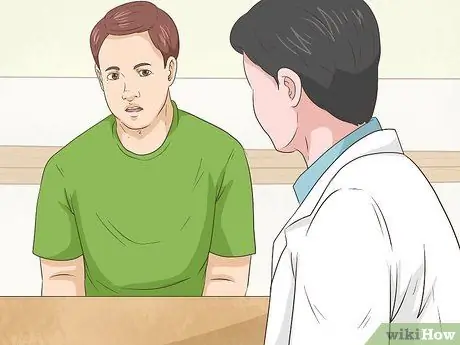
Step 1. Visit a doctor
See your doctor if you feel discomfort after eating gluten-containing foods. Your doctor can check if you have celiac disease or another condition that can make your gluten intolerance worse and then recommend treatment to help manage the symptoms. Remember that there is no cure for gluten intolerance, and there are only ways to control it.
- Your doctor may perform tests such as blood tests, endoscopy, capsule endoscopy to check if you have celiac disease or even gluten intolerance.
- Your doctor may also check for conditions associated with celiac disease or other gluten intolerance, such as anxiety, depression, migraines, thyroid disease, bowel cancer, osteoporosis, dermatitis herpetiformis, neuropathy, and arthritis.
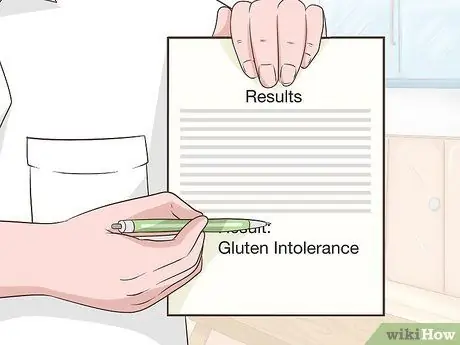
Step 2. Confirm the diagnosis and treatment
After undergoing the examination, ask your doctor to confirm the diagnosis of your condition. Your doctor will likely also come up with the best treatment plan for you at that time.
- Your doctor will tell you whether you have celiac disease or gluten intolerance. The best treatment option in either case is to avoid gluten.
- Your doctor may prescribe medication or vitamin supplements to help relieve symptoms of celiac disease or other gluten intolerances.
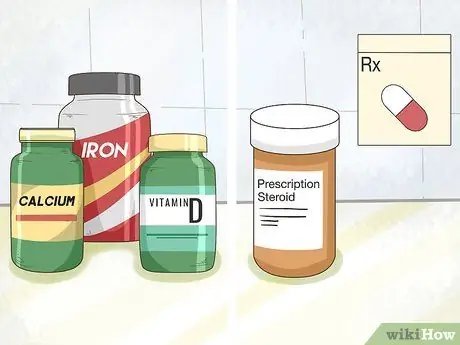
Step 3. Use supplements and medications
Many people with gluten intolerance experience nutritional deficiencies, inflammation of the intestines, or even blisters on the skin. The use of dietary supplements and medications can help control peripheral symptoms in gluten intolerance or celiac disease.
- A gluten-free diet is a major step in controlling gluten intolerance.
- You may need supplements of calcium, folate, iron, vitamins B12, D, K, and zinc.
- Your doctor may prescribe steroids to control inflammation in your intestines.
- If you have dermatitis herpetiformis, which is an itchy rash and blisters on the skin, your doctor may prescribe dapsone to relieve it.

Step 4. Consult a nutritionist
If you're having trouble sticking to a gluten-free diet, consider consulting a dietitian. A nutritionist can help you identify foods that contain gluten, choose better foods, and develop a gluten-free diet for you.
- Healthcare professionals who specialize in gluten intolerance can provide a wealth of information about gluten-free foods, hidden gluten sources, and food options when you eat out.
- If you're having trouble finding a dietitian or health care professional who specializes in gluten intolerance, you can visit the National Foundation for Celiac Awareness website, which provides a wealth of information about this condition or join other groups of people with gluten intolerance.
Part 2 of 2: Avoiding Gluten in Food
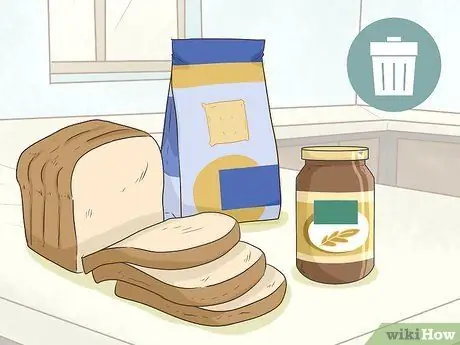
Step 1. Remove gluten-containing foods from the kitchen
Gluten intolerance is triggered by foods that contain gluten, so you should remove all products containing this ingredient from your home. This step can help relieve symptoms while also preventing you from accidentally consuming foods that can make your stomachache worse. Foods that contain gluten include:
- Barley, including malt and malt vinegar
- Rye
- Triticale, which is a cross between wheat and rye
- Wheat and wheat flours such as semolina, farina, durum, graham, kamut, and spelled.

Step 2. Identify foods that contain gluten
At this time, wheat and wheat flour are very much in the daily diet, so you need to know what foods contain wheat flour and/or gluten. You may have to avoid eating some of your favorite foods, but this step will help with your gluten intolerance. Some examples of foods that contain gluten are:
- Beer
- Bread
- Cake and pie
- Cereals
- Host
- Croutons
- Fried food
- Gravy, sauces, salad dressings and the food in them
- Vegetable meat and seafood
- Pasta
- Processed meat
- Soy sauce
- Spiced food and snacks
- Soup
- If in doubt, don't keep the food. The Celiac Disease Foundation provides a list of foods that contain gluten at
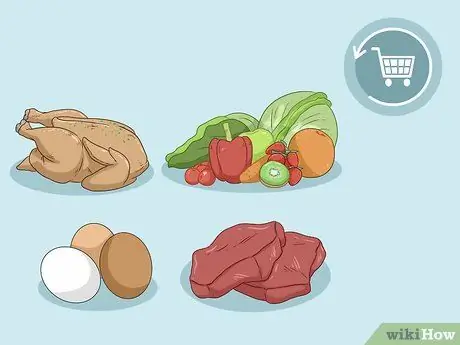
Step 3. Switch to gluten-free foods
Even if you suffer from gluten intolerance and need to eliminate a lot of foods from your diet, you can still fill the kitchen and enjoy gluten-free foods instead. Abstaining from gluten-containing products or foods can help ensure you don't unintentionally make foods that could exacerbate symptoms.
- If you live at home with other people who still eat gluten, consider separating your ingredients to make sure your food doesn't contain gluten.
- You can eat the following naturally gluten-free foods without worrying: nuts, seeds, fresh eggs, fresh meat, fish, poultry, fruit, vegetables, and most dairy products.
- Most convenience stores have a wide variety of gluten-free options, an ingredient you should avoid. Ask if there's a dedicated gluten-free food selection rack you can use to stock up the kitchen.
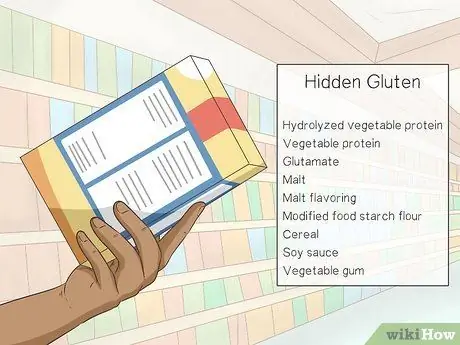
Step 4. Check for hidden gluten
Many naturally gluten-free foods contain hidden gluten or are combined with foods that contain gluten. Read the label on the package to avoid these types of foods and their annoying symptoms.
- Some naturally gluten-free cereals that you can include in your diet are amaranth, arrowroot, buckwheat, corn and cornstarch, flax, gluten-free flour, millet, quinoa, rice, soy, tapioca flour, and teff.
- Some markers of gluten include: hydrolyzed vegetable protein, vegetable protein, glutamate, malt, malt flavour, modified food starch, flour, cereals, soy sauce, and vegetable gum.
- Avoid all processed products and foods that are not labeled "gluten-free," including condiments.
- Check ingredients when eating at a restaurant, at a friend's house who doesn't eat the same diet, or when trying freshly cooked food.
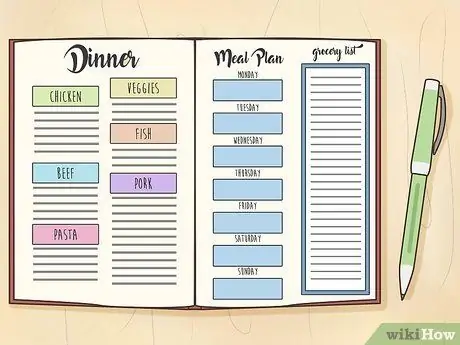
Step 5. Schedule meals as often as possible
Cooking yourself is the safest way to make sure you don't eat gluten. Planning a meal plan can help you avoid foods that contain gluten while ensuring that your nutritional needs are met.
- Create a meal schedule for the week. Pay attention to foods you don't eat at home, such as lunch or dinner. In cases like this, bring lunch from home if possible. If not, you may need to look for gluten-free options at restaurants.
- For example, you can start the day with a cheese and veggie omelette along with gluten-free toast, butter and fruit. For lunch, you can enjoy a salad with salmon and an olive oil and vinegar dressing. For dinner, you can have a steak with broccoli and lots of baked potatoes.
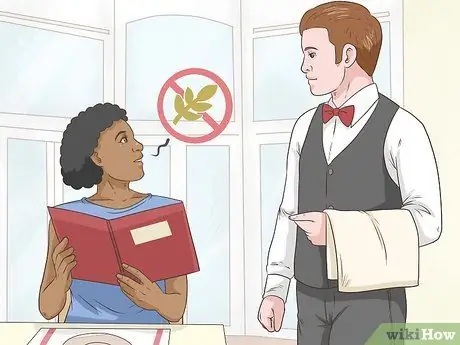
Step 6. Choose a restaurant wisely
You may find it difficult to eat at restaurants if you avoid gluten. Many restaurant menus contain hidden gluten and expose your food to the ingredient. Asking about food menus at restaurants and avoiding foods that clearly contain gluten can save you from the discomfort of accidentally consuming gluten (even in small amounts).
- Many restaurants today have gluten-free options on their menus. However, if you don't have one, you can ask the restaurant's manager or chef about the potential for gluten in foods.
- The National Foundation for Celiac Awareness website, https://www.celiaccentral.org/dining/ has a selection of restaurants that are certified gluten-free.
- Some foods to avoid in restaurants include: croutons, wontons, fried onions, and crispy noodles in salads, soups containing flour or barley, foods marinated in soy sauce or teriyaki sauce, foods that are dusted with flour before frying, oils used for cooking fry a variety of different breads, mashed potato dishes, buns.
- Some of the foods that are allowed to be consumed in restaurants are steamed vegetables, grilled meats, desserts with vegetables or ice cream.
- Be prepared if the restaurant does not provide your first choice of food.

Step 7. Avoid cross-contamination
Exposure to gluten in foods due to cross-contamination is common. Avoiding this cross-contamination as much as possible can help relieve and manage your symptoms.
- At restaurants, ask if gluten-free and gluten-free dishes are prepared at the same table. If you are very sensitive to gluten, you may need to avoid visiting this restaurant altogether.
- Even at home, cross-contamination is still possible. So, try to use different cutting boards and countertops to prevent cross-contamination.
- You may also want to avoid using cookware such as a toaster, oven, or baking sheet in common.






